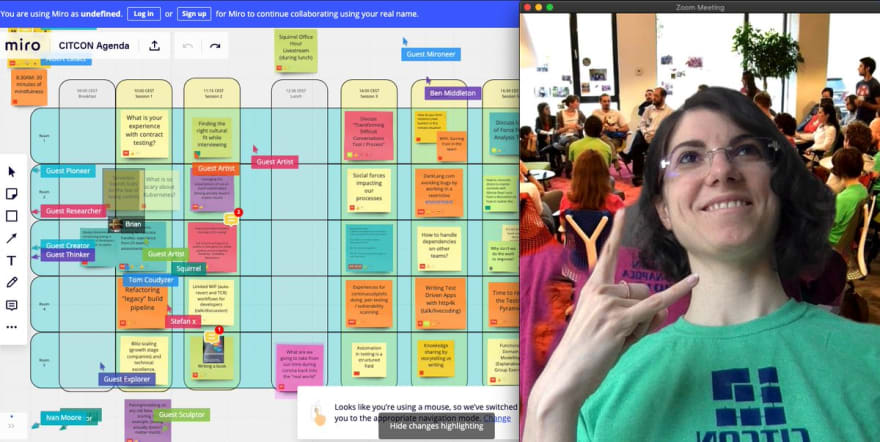
 Adina Moldovan@adinnaplus
Adina Moldovan@adinnaplus 16:44 PM - 30 May 2020
16:44 PM - 30 May 2020
Have you heard about open-spaces before? Have you ever been to an unconference? If yes, find something else to read. Otherwise, keep on reading. I’m going to describe how I experienced a virtual unconference I recently attended. By the end, you will have some good reasons to join one.
What is an unconference?
I’ve written about unconferences before, but I never explained why I love this event format. There’s a lot to say, but I’ll restrict myself to the top three reasons why I keep coming back:
- Autonomy and empowerment: the format of the event allows the participants to focus on meeting their individual needs. The law of two feet means that you are expected to use your own two feet to move to whatever place you can best contribute and learn. In the same way, all participants are allowed to adjust scheduled sessions as they see fit.
- Strong engagement of participants: anyone can propose a topic for a session. During a session, you are encouraged to suggest an improvement if you notice that a session is not going well.
- Relaxed expectations: two guiding principles remind participants to take it easy. “Whoever comes is the right people” and “Whatever happens is the only thing that could’ve happened“.
An open-space offers a different kind of experience than a regular conference. Even with a good understanding of the guiding principles, it’s going to be hard to imagine how it develops unless you attend it.
A typical unconference session
A typical unconference session is usually a “go-with-the-flow” discussion on the proposed topic, and it depends on the participants to set the direction and to keep the session on track. Often, participants, bring up a couple of subjects related to the topic. Commonly, some of the subjects will be touched only briefly. There’s no slide deck to take away at the end; every participant takes from the session whatever they need.
CITCON unconference goes virtual
CITCON usually takes place in a European city. Since COVID-19 makes traveling unsafe, CITCON 2020 went online. I volunteered to help the organizers, Jeff and PJ. We used the suggestions from Misha Glouberman, did a couple of test runs, and, in the end, we had a good understanding of the technology stack needed to need all the needs of an open-space. Amelie sums it up perfectly.
Tool stack this time is:
- slack (single channel)
- zoom rooms (we're all co-hosts)
- single google doc with All The Links
- miro for the schedule10:37 AM - 30 May 2020
The tools worked well on the day of the conference (~70 participants). A couple of notes on the tools: the organizers arranged for a basic Zoom subscription, and a basic Miro subscription. There was also a need for a full-time “Zoom receptionist”, with the primary responsibility of elevating participants to co-hosts. Being a co-host means that you can move around the breakout rooms, which served as the rooms of the sessions (the blue horizontal swimlanes in the schedule below).
When it’s over, it’s over
I am finishing with another of the four principles of open-spaces. Creativity has its rhythm. So do groups. When you think it is over, ask: Is it over? And if it is, go on to the next thing you have passion for. See you at CITCON. Or at humansconf. Or at DevOpsDays.







Top comments (0)